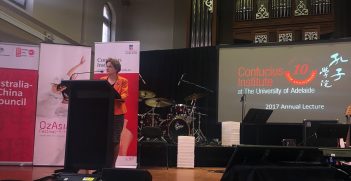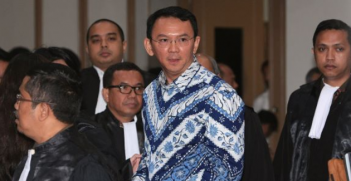Jihadist Threat in 2017

In the first week of the new year, ISIS’s online magazine Rumiyah’s fifth issue again instructed Western supporters to attack at home. In the same week, ISIS claimed responsibility for terrorist attacks in Istanbul and Baghdad, and car bombers led the organisation’s ongoing defence of Mosul. Meanwhile, Al-Qaeda’s Ayman Al-Zawahiri reminded the world that while attacking America and its allies is still a “top priority”, Al-Qaeda-ISIS tensions remain high. So what can we expect from the rest of the year?
2017 promises a more volatile and diffuse jihadist threat as the war on ISIS causes various Islamist extremist groups to strategically evolve as they compete for attention and influence. This dynamic will shape the production and drive the consumption of jihadist propaganda designed to inspire Western supporters to commit acts of terror. Further catalysed by the potential influence of returned foreign fighters and the prospect of centrally directed plots, many Western governments will confront a more erratic jihadist threat. It will be a threat that will be harder to proactively disrupt, thus placing even greater pressures on preventative measures.
Weakening centre, active peripheries
In its heartlands of Iraq and Syria, ISIS has suffered significant territorial, resource and personnel losses. ISIS is estimated to have been driven from over 60 per cent of the territory it once held in Iraq and almost 30 per cent of what it held in Syria. Its propaganda output has also significantly decreased since its 2015 peak. This has all occurred while its leadership continues to be devastated by targeted strikes. Yet as ISIS’ centre weakens, its peripheries are likely to become increasingly active as fighters and resources disperse outwards from its heartlands. These shifts will be part of a broader transition in ISIS’ politico-military strategy—back to prioritising guerrilla warfare and terrorist operations, and a downsized propaganda effort.
In turn, ISIS’ transnational aspirants and wilayats—or governorates—will become increasingly active for two reasons. First, as a strategic manoeuvre to attract attention away from its hubs in Syria and Iraq. And second, as a means to increase their own profile within the global jihadist milieu in order to attract resources, supporters and perhaps a new wave of foreign fighters. In Rumiyah 4, released last month, ISIS reminded its global audience that “whoever is unable to perform hijrah [migration] to Iraq and Sham [Syria], then he should perform hijrah to Libya, Khurasan, Yemen, Sinai, West Africa or any of the other wilayat and outposts of the Khilafah [Caliphate] in the East and West.”
Were these dynamics to emerge, they would not be without precedence. Rather, they would be broadly reminiscent of the impact coalition efforts had on Al-Qaeda’s (AQ) central group. As AQ’s centre weakened, parts of its periphery emerged. This emergence was epitomised first by the rise of Al-Qaeda in the Arabian Peninsula (AQAP) and later—in the aftermath of the Iraq war and during the Syria crisis—ISIS itself. As ISIS enters the next chapter of its boom-bust history, the prospect of a wilayat in the Middle East, Africa or Asia becoming its new flagship underscores the importance of not losing sight of the broader war against ISIS.
Beware of vacuums
During war, losses—whether in territory, personnel or capability—create vacuums that other actors will inevitably rush to fill. An important factor in how the global jihadist milieu evolves in 2017 is how AQ-ISIS tensions playout as each pursues its own strategic aims. Warnings that Al-Qaeda are applying a more strategic and long-sighted ‘game’—a point regularly made to me during interviews with Syrian opposition representatives—could see ISIS losses becoming AQ (or AQ-affiliated) gains in places like Syria, Yemen and Afghanistan. Of course, this dynamic is made more complex and unpredictable by the fact that not only are AQ themselves regularly the targets of counterterrorism actions, and thus often the source of vacuums, but a diverse array of other state and non-state actors also operate in these regions.
This is the problem with vacuums and their effects: they create opportunities but also compound risk, unpredictability and volatility. ISIS’ 2016 defeats will continue through 2017 and create vacuums in their wake. From an intra-organisational perspective for instance, leadership losses and increasing perceptions of crisis within ISIS’ ranks will provide fertile conditions for the rise of charismatic figures, especially if ISIS’ so-called caliph is killed. More broadly, fractured and increased competition within the global jihadist milieu are potentialities that sit on one side of a spectrum of possible outcomes. As the war in Syria has shown, ceasefires and mergers motivated by pragmatism can override, even if fleetingly, ideological and personal disagreements. In short, military and intelligence actions may deliver first-order ‘wins’ but, without top-down political action and bottom-up governance to fill the ensuing void, unpredictable second- and third-order effects can be disastrous.
Propaganda to inspire and instruct
As the aforementioned trends of the ongoing jihadist spring playout, the master propagandists of ISIS and AQ will step up efforts to craft messages designed to shape how target audiences perceive the world and choose who to support. To Western supporters, AQ and ISIS propaganda will increasingly seek to weave together inspirational narratives and instructional material. This has been a relatively recent development in ISIS messaging to Western supporters but the West should expect more instructional content augmented by similar content in other formats. Rumiyah’s Just Terror section and ISIS’ instructional video “You must fight them o muwahid” are just two examples of a more sophisticated melding of doctrine and instruction.
Jihadist-inspired lone actors in the West have shown themselves to be enthusiastic consumers of jihadist propaganda with little jurisprudential knowledge and seemingly unconcerned by inter-group rivalries, like that of ISIS and AQ. As ISIS weakens and AQ seeks to leverage its opportunities, inspiring Western supporters to act on their behalf will become more important and their small—but growing—group of followers in the West may feel even more empowered to act. Fifteen years of wars on terror have demonstrated that crude rhetoric, ill-conceived strategy and shallow debate are a sure recipe for policies and actions that contribute to, rather than undermine, the conditions within which extremism tends to flourish. Days away from Trump’s inauguration, the forecast outlined here may prove optimistic.
Dr Haroro J Ingram is the winner of the AIIA’s Research Impact Award for 2016. He is a lecturer with the Australian National University and an associate fellow with the International Centre for Counterterrorism (ICCT – The Hague).
This article is published under a Creative Commons Licence and may be republished with attribution.





